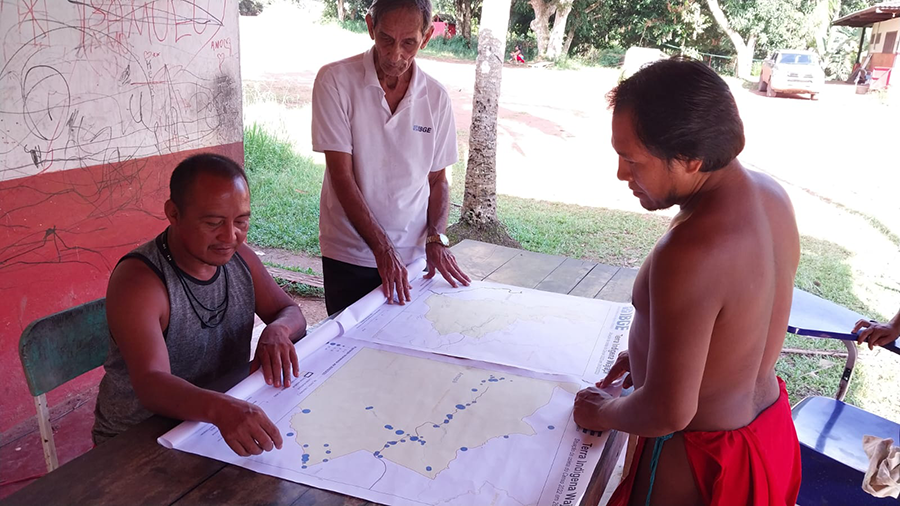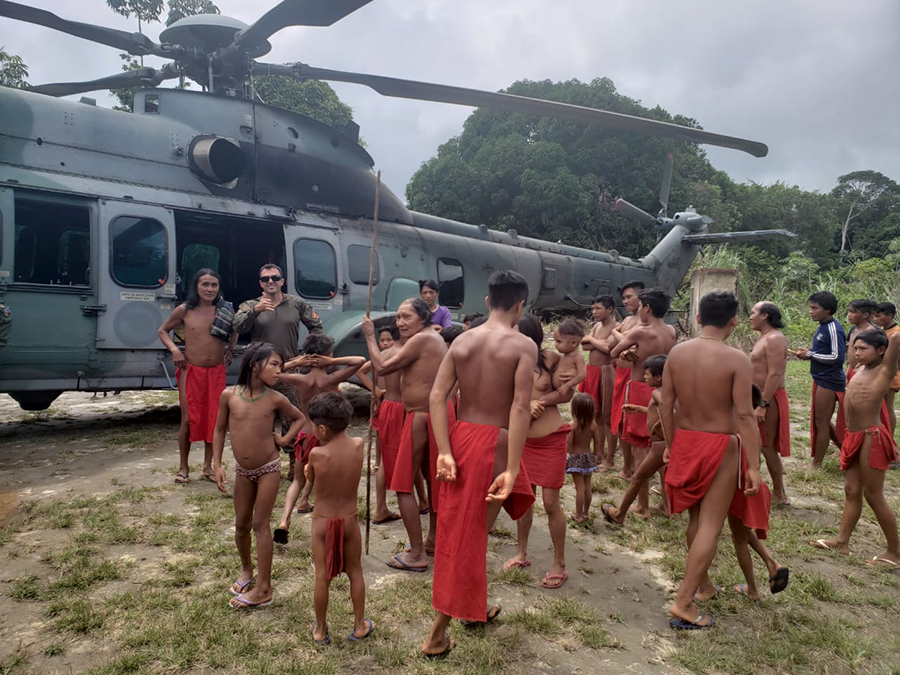IBGE ends data collection for 2022 Census on the Wajãpi Indigenous Land in Amapá
May 02, 2023 17h39 | Last Updated: May 05, 2023 22h40
Action counted on the support of the Brazilian Air Force and visited 16 villages in the municipalities of Laranjal do Jari and Pedra Branca do Amapari.
The IBGE ended, on Thursday (30/03) the last step of data collection for the 2022 Census on the Wajãpi Indigenous Land in Amapá. The enterprise counted on the support of the the Brazilian Air Force (FAB), which helped the team reach, by helicopter, the 16 villages located in the municipalities of Laranjal do Jari and Pedra Branca do Amapari.
The action started on March 21 and was intended to enumerate indigenous persons who had not been interviewed by the IBGE yet. Throughout the 10 days of data collection, the IBGE got to enumerate 100 indigenous persons who would be out of the 2022 Census.
The activity was conducted by two teams formed by an enumerator, a guide-interpreter of the Wajãpi Villages Council (Apina) and an institutional guide from the National Indian Foundation (Funai) our the Special Secretariat of Indigenous Health (Sesai).
The action also counted on the support of the manager of planning and administrative management of the IBGE State Superintendence in Amapá (SES/AP), Francisco Tomé Menezes, who contributed to the initiative by indicating coordinates for the FAB teams to reach the villages.
“I have made calculations of some coordinates that we could not extract, but, given my experience I used the maps to help the FAB team reach the area and find the village that had been programmed.”

Photo: IBGE
The end of data collection in the Wajãpi territory was marked by a meeting between the IBGE team and indigenous leaderships of the community to make a balance of the action, as detailed by the national Census coordinator in indigenous and quilombola areas, Marta Antunes.
“The IBGE team ended this activity with a meeting so that we could finally finish data collection in the village as the indigenous leaders were informed that all of them had been visited, in accordance with out commitment of not leaving any person who lives in Brazil out of this national portrait called Population Census.”

Photo: IBGE
The meeting was always attended by the IBGE superintendent in Amapá, Haroldo Ferreira, who cleared doubts about the Census and told the village members about the coming steps of the demographic survey.
“We passed on information to the leaders about the Census steps, what we expect for the next edition, planning issued, ressources and we also told them the IBGE would be available in case they need official data about the indigenous population, including, number of men and women, age bracket, languages spoken and all the information which will be released about the indigenous population,” he says.
The coordinator also spoke about the importance of FAB for the conduction of this last step of data collection in the Wajãpi indigenous land, because the access in these 16 villages is only possible by helicopter, granted by the 1st Squad of the 8th Aviation Group, headquartered in the Air Force Base of Natal-RN.
“The work started in September and we did everything possible to access the area by water and land. We still needed the helicopter to reach the most distant villages. For this reason, the help of fAB was essential for us to finish enumeration in the Wajãpi territory,” the coordinator said.
Besides FAB, the IBGE counted on the participation of the Wajãpi Villages Council (Apina), Funai's Regional Coordination of Amapá and North of Pará, Indigenous Formation and Research Institute (Iepé) and of the Indigenous Health Special District of Alto Amapá and North of Pará in the steps of Census planning and execution in the indigenous lands of Amapá.



